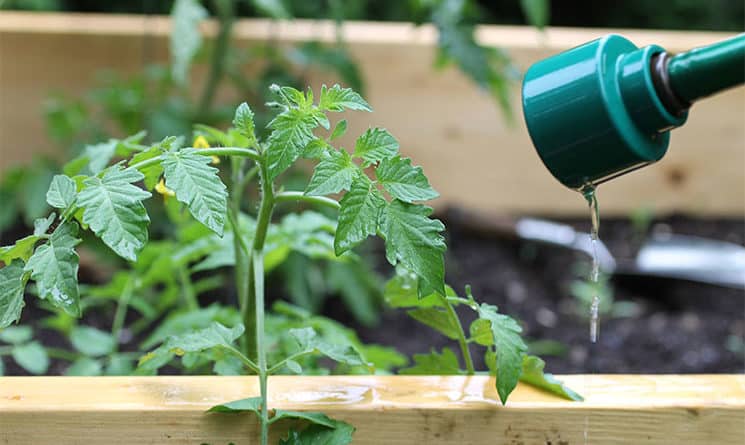Seed catalogues are now showing up in mailboxes in full force, assuring us that spring is not too far away. Here at the Education Center and Info Line, we are already getting calls daily from gardeners seeking advice on strategies to have their best gardens yet. Let’s take a look at a few suggestions to help ensure success in the coming season.
Resistant varieties should be part of the first line of defense for gardeners looking for environmentally friendly options to grow plants challenged by common pests and diseases without a relying on pesticides. Tomatoes are a great example of a crop that has seen some very exciting developments in disease resistance in recent years, with some varieties containing resistance to early blight, late blight, and other diseases all in one. One of the most useful strategies in the garden is to remain diligent about the identification of pests and diseases in the garden. Once they have been identified, it becomes possible to utilize resistance and variety selection as a major means of control.
Controlling environmental conditions is a strategy that can be very effective in certain conditions. In plant pathology, we often think about the contributing factors to plant diseases within a complex known as the “disease triangle.” For a disease to thrive, each corner of the triangle must contain one of the following: a host, suitable environmental conditions, and a pathogen. Take away just one of these factors, and the problem cannot persist. Many fungal diseases require prolonged periods of leaf wetness to grow. In the garden, consciously implementing good irrigation practices can help tip the scales in our favor. Avoiding overhead watering, providing plenty of space between plants for airflow, and watering early in the day to facilitate rapid leaf drying are recommended practices to reduce disease pressure.
Increasing organic matter provides a multitude of benefits in garden soils. As it decomposes, a constant stream of nutrients, including nitrogen, is released into the soil matrix and becomes available to plants. Your soil test can tell you what percentage of organic matter your soil presently contains. It’s a good practice to track this organic matter over time, since every 1-percent increase in soil organic matter increases soil water holding capacity by 25,000 gallons per acre. Organic matter can be added to the garden in the form of compost, manure, leaves, straw, bark mulch, and cover crops.
Extending the growing season is important to maximize what we can grow in a given season. Techniques such as utilizing cold frames, floating row covers, hoop houses, and even high tunnels continue to gain popularity, making it possible to harvest some cold-tolerant vegetables well into late fall, and extra early in the spring.
Encouraging beneficial insects is a strategy where we can work with nature to control insect pests. Many of these beneficials feed on insect pests that would otherwise cause damage to our favorite plants. Planting a diversity of flowering plants that bloom over an extended season from spring through fall will help ensure that beneficials have the food and shelter needed to set up camp in your gardens.
Conserving water has been a major issue over the last few seasons. Utilizing smart irrigation technologies like drip or wicking systems can drastically reduce the amount of water needed to keep plants healthy and growing. Properly mulching garden beds add to this conservation effort while reducing plant diseases simultaneously.
Jeremy DeLisle is the program coordinator for the UNH Cooperative Extension Education Center. The center answers questions about gardening and more at answers@unh.edu, or by calling 877-398-4769, Monday through Friday, between 9 a.m. and 2 p.m.

